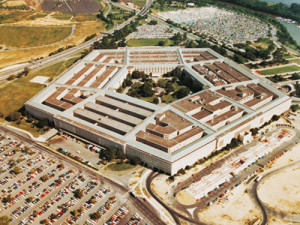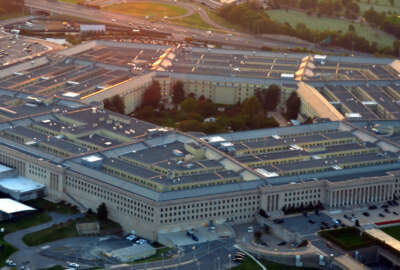
DoD will create diverse teams to cut out duplicate offices in military services
A Defense Department memo creates cross-functional teams to find where military services are overlapping in business practices.
The Defense Department is relying on teams with broad expertise to crosscut bureaucratic tiers and clean waste in the Pentagon.
A Feb. 17 memo from Defense Secretary James Mattis is taking to heart a task Congress legally required DoD to take up in the 2017 defense authorization act.
The memo assigns “cross-functional teams” (CFTs) to consolidate tasks and duties the military services separately perform.
“I recognize the military services have unique competencies in the specific operating domains … However, we have sometimes allowed our focus on service uniqueness to extend into business operations, leading to duplications of efforts and costs we can no longer afford,” Mattis wrote in the memo.
CFTs are made up of different functional experts all working toward a common goal. A single team may include people from logistics, communications, finance and human resources from all levels of DoD and even from outside the department.
The hope is to integrate the Pentagon in a more horizontal fashion, where different divisions can work together instead of divisions working vertically in a stovepiped manner.
Mattis asked the teams to look into human resource management, acquisition and contract management, logistics and supply chain management, health care management, base services and cyber/IT management.
The memo appoints the deputy defense secretary to lead the initiative and to bring decisions forward for consideration during the fiscal 2019 program cycle.
DoD has long suffered from inefficiencies and waste.
The Defense Business Board issued a 2015 report that stated DoD could save $125 billion over five years purely through administrative measures. Those include cutting back on contractors, streamlining bureaucracies and other improvements. The report stated those savings could be made without laying off any Pentagon staff.
Still, staff is a whole problem in itself.
The Joint Staff has burgeoned to more than 4,000 employees, the Office of the Secretary of Defense to 5,000 and the combatant commands have grown to more than 38,000, Flournoy said.
They “are ripe for a real scrub in terms of the breadth of their functions and the level of duplication with the joint staff and with OSD,” Michele Flournoy, former DoD undersecretary for policy told the Senate Armed Services Committee in 2015. “Headquarters have continued to grow even though active duty military has shrunk. In total, if you add in the defense agencies you have 240,000 people, excluding contractors, to a cost of $113 billion, it’s almost 20 percent of the DoD budget.”
Many of the areas Mattis targeted for consolidations made an appearance on the Government Accountability’s High Risk List released last week.
Latest Defense News
The report, which points out government issues in need of critical attention, notes that even DoD’s ability to find duplicative programs and offices is a problem in itself.
Other areas GAO highlighted were supply chain management, acquisition management, financial accountability and infrastructure issues.
But CFTs may be the best way to address the problems.
“Part of the issue is that the problems we identify require multiple components of the Defense Department to work together. Many of our recommendations on overlap, duplication and fragmentation have to do with components of DoD itself rather than across government. It’s a very large operation,” said Comptroller General Gene Dodaro during a Feb. 15 congressional hearing.
DoD experimented with cross-functional entities last year in the realm of service contracts. The acquisition office created cross-functional units to better its service contracting.
“You can’t have the idea that everyone is an expert on everything. So, how do you look at and gain that knowledge and share that and create communities of practice?” said Claire Grady, DoD’s director of defense procurement and acquisition strategy. “A functional domain expert [will] have that cross-cutting look across the community field into how we are buying services. [It] is a critical part of how we are tackling this.”
Not everything about CFTs is rosy, however. An August 2016, National Defense University study noted CFTs could create friction with functional leaders as it pursues its mission.
Former Defense Secretary Ash Carter noted in his 2017 NDAA heartburn letter that CFTs would result in “increased bureaucracy and a larger, less efficient and less responsive DOD organization.”
Copyright © 2025 Federal News Network. All rights reserved. This website is not intended for users located within the European Economic Area.
Scott Maucione is a defense reporter for Federal News Network and reports on human capital, workforce and the Defense Department at-large.
Follow @smaucioneWFED




